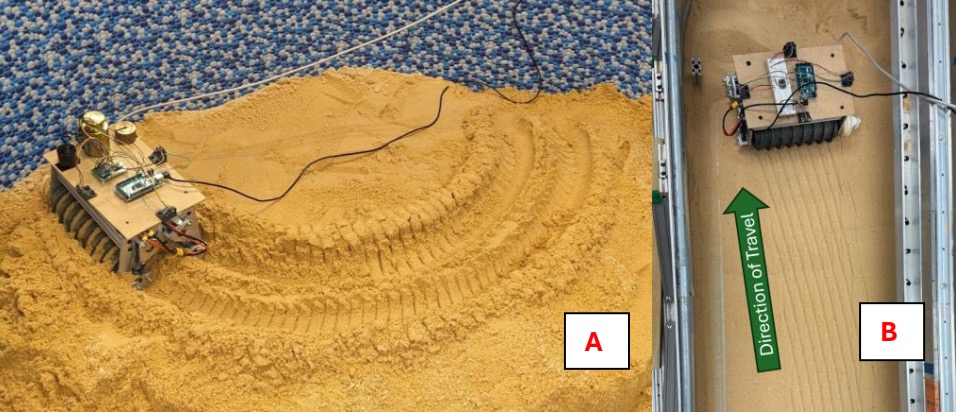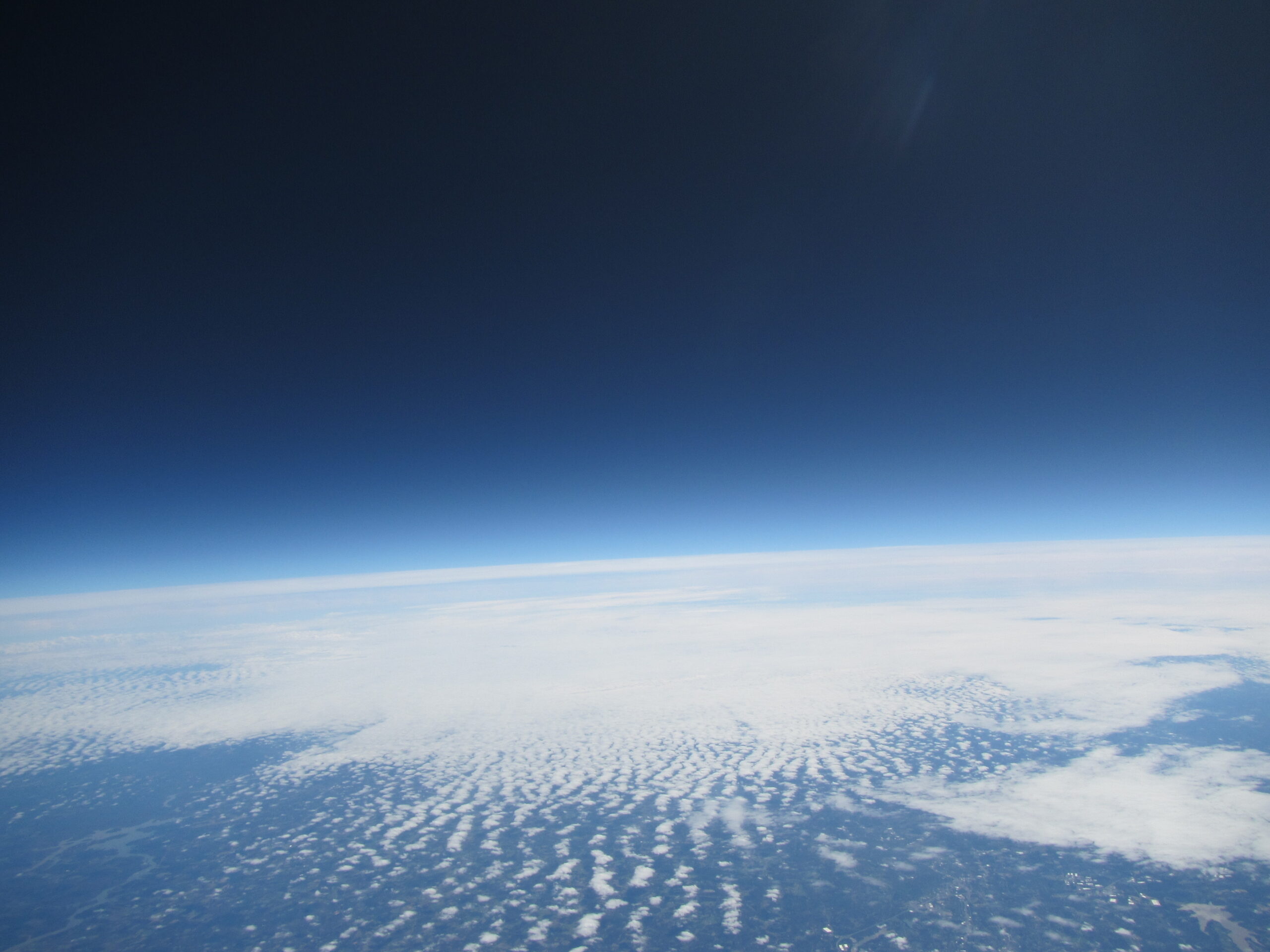Statewide Star Party is a Stellar Success: Connecting People to Nature From the Mountains to the Sea
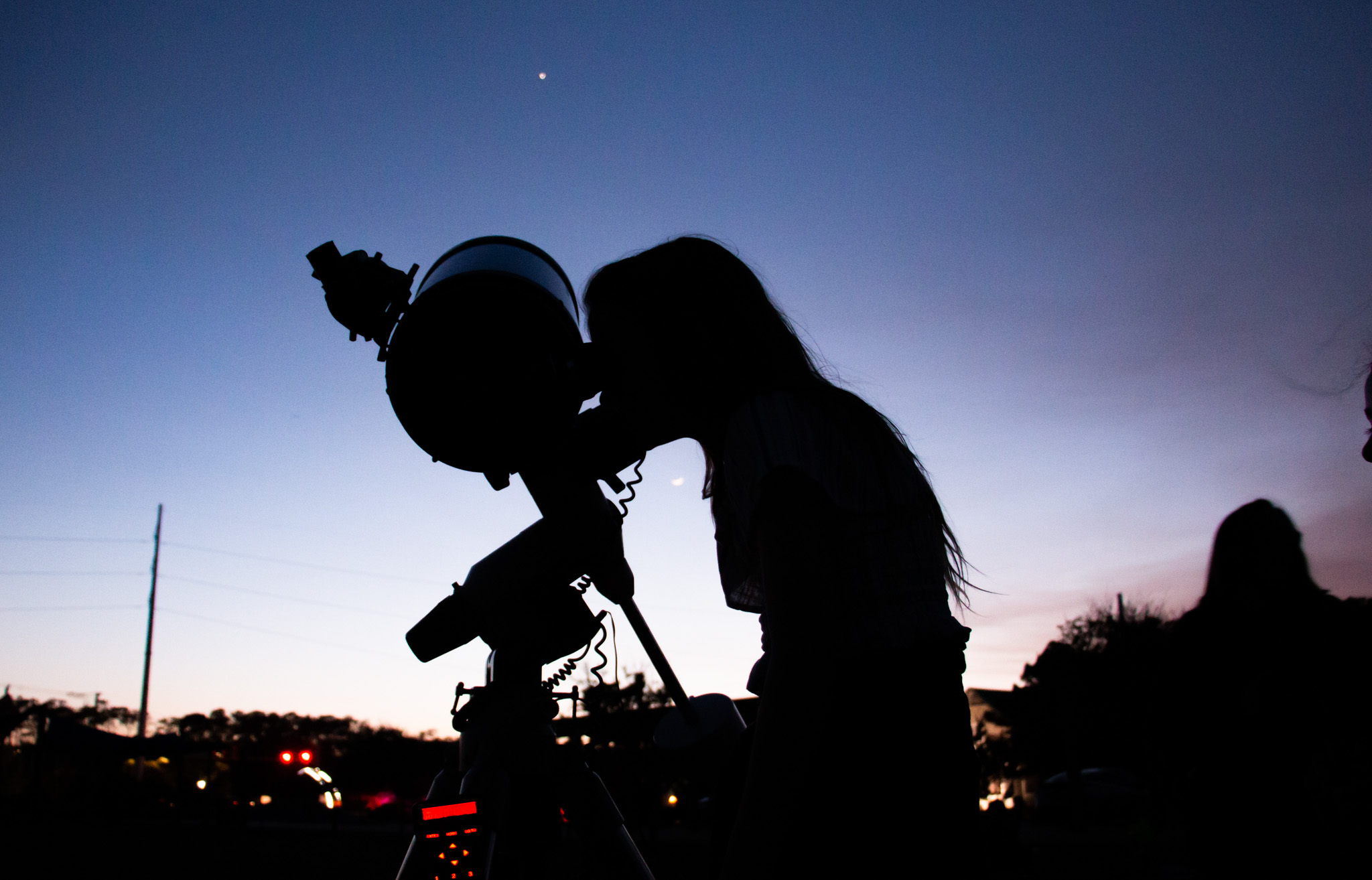
In April, the North Carolina Science Festival hosted the 11th annual Statewide Star Party, an opportunity to stargaze, celebrate and learn about the night sky. Approximately 8,500 people participated in these public skywatching events at 35 different locations from the mountains to the sea.
“The star parties help bring together organizations and of course, people,” said Amy Sayle, science education specialist and Statewide Star Party coordinator based at the Morehead Planetarium and Science Center at the University of North Carolina at Chapel Hill. “My goal with the star parties is to help people connect to the night sky. The sky is half our field of view, and on a clear night, we can look into the universe. We want to help people enjoy the night sky and learn about this incredible universe we live in.”
As an annual supporter of the Statewide Star Party, NC Space Grant provides special star party kits with hands-on activities and NASA resources to each location, with a focus on each year’s theme. This year’s theme was “Celebrating the Night Sky.” Attendees learned about how to protect dark skies by reducing light pollution.
“For the past 11 years, we’ve partnered with the Morehead Planetarium and Science Center to bring thematic, astronomy based education to communities across the state,” Jobi Cook, associate director of NC Space Grant, said. “Every April, thousands of people attend Star Party events — at their local library, state park, museum, or university — to explore the night sky. It’s been a wonderful statewide partnership!”
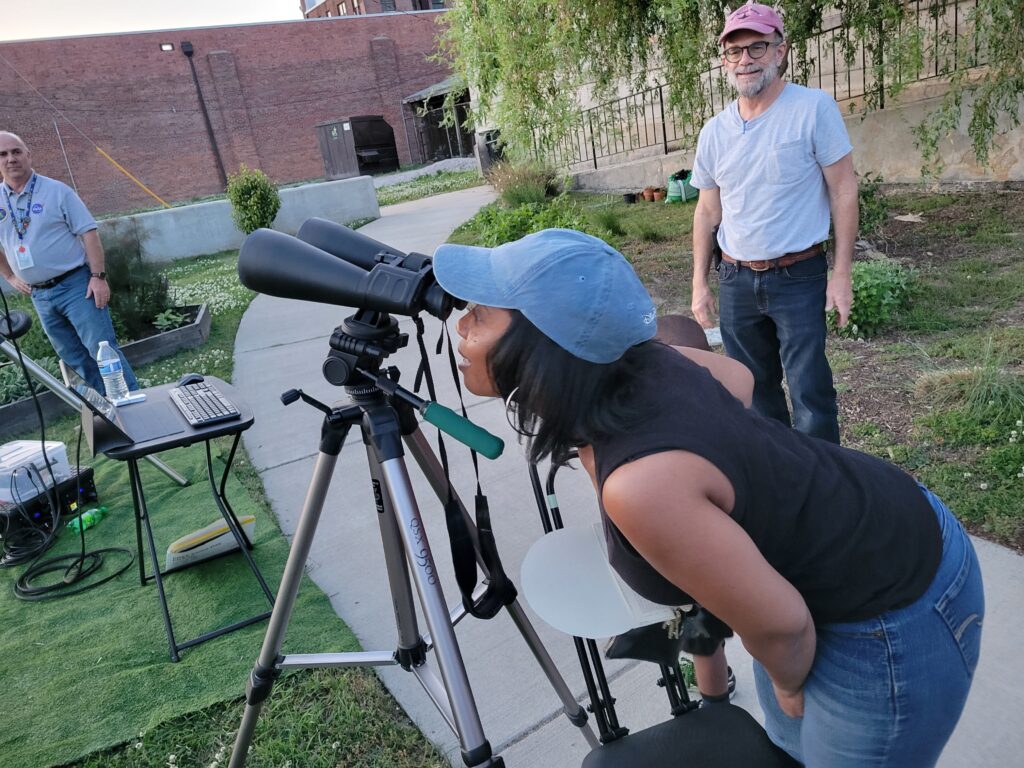
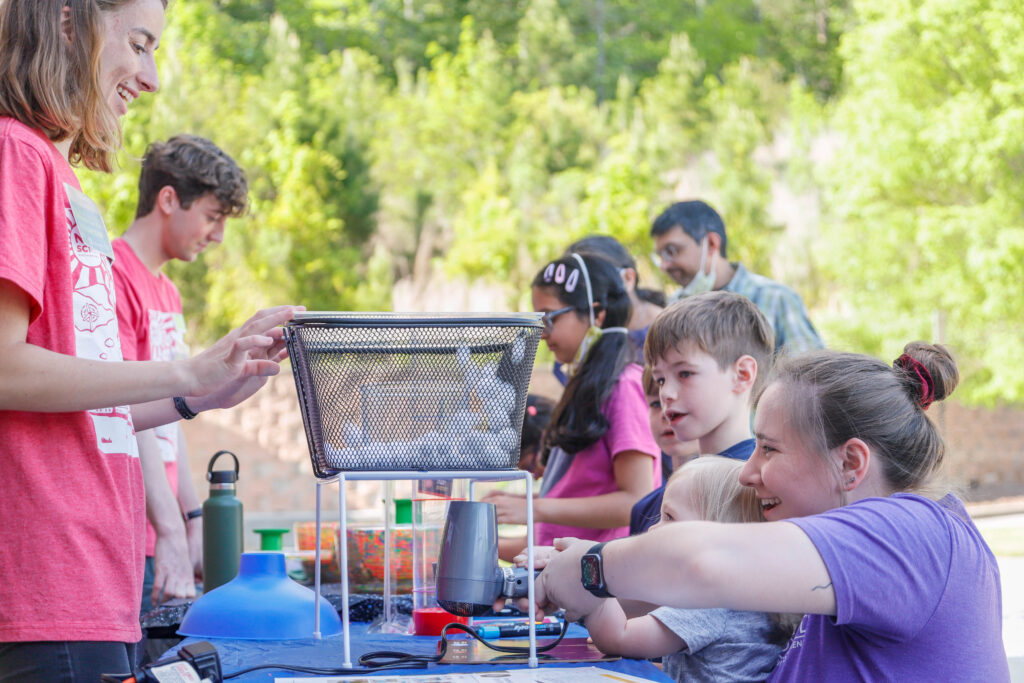
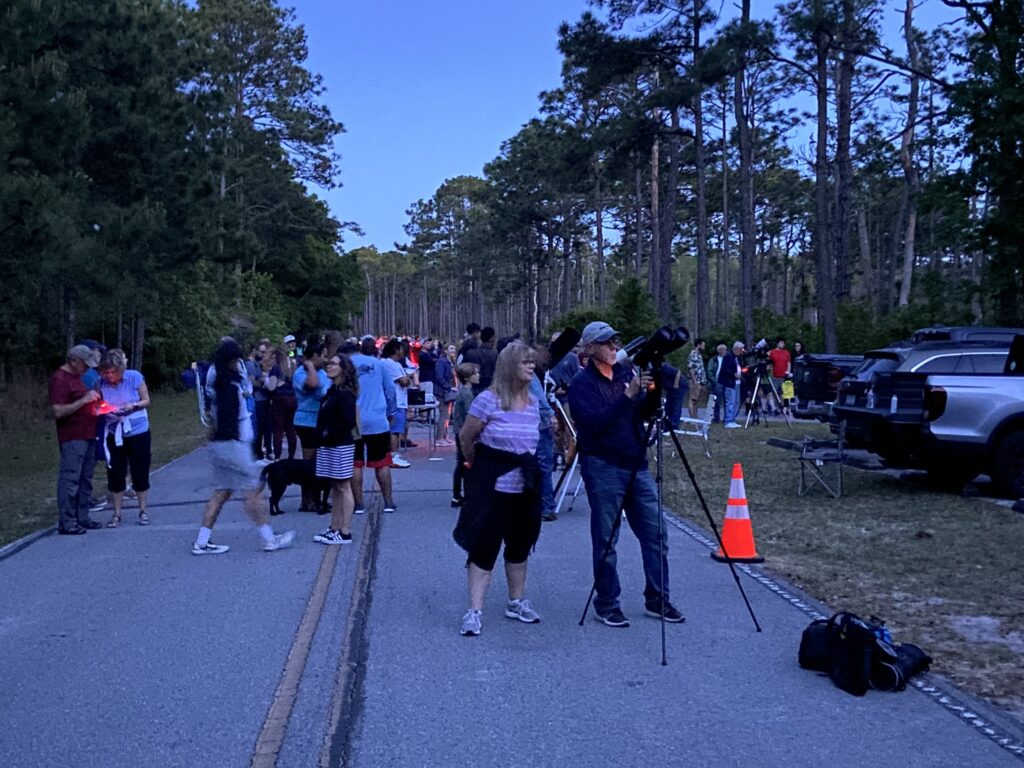
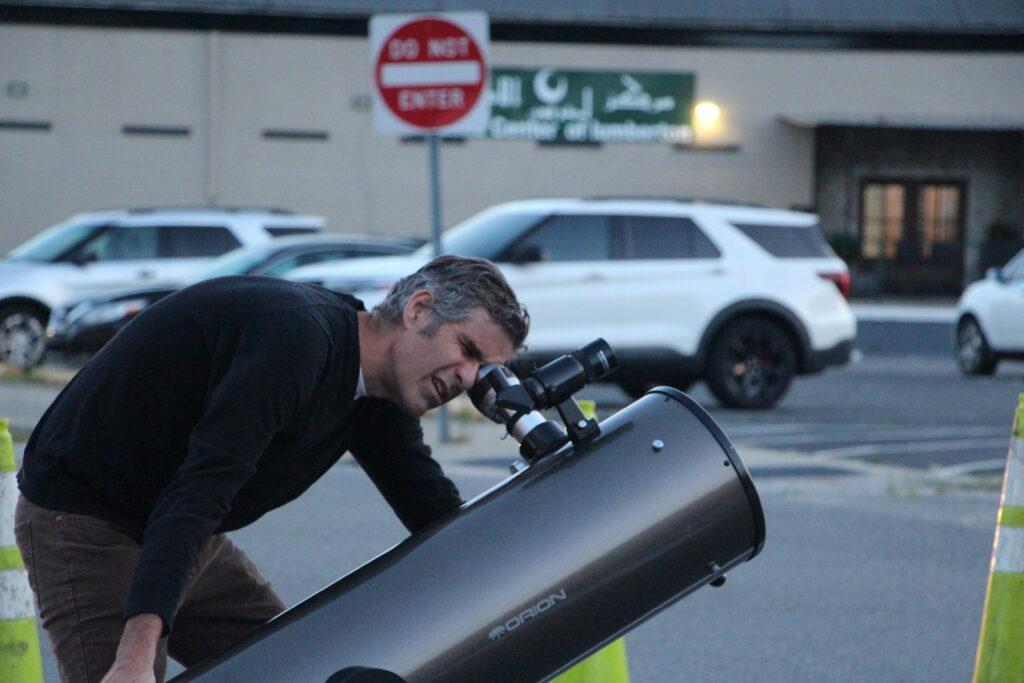
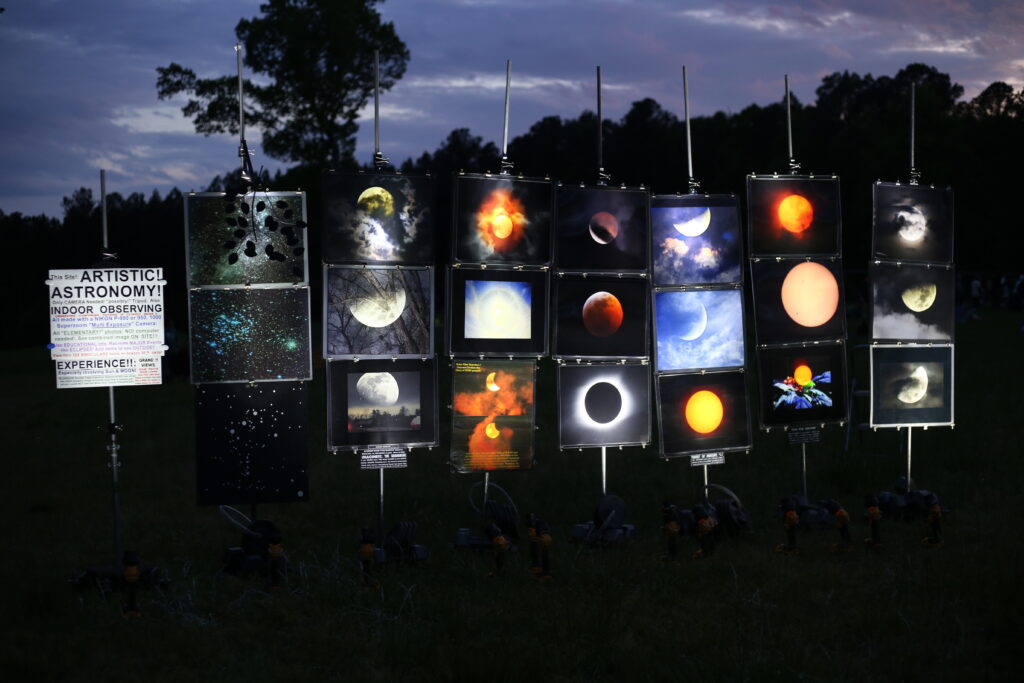
Breaking Barriers
In many ways, the Statewide Star Party breaks down the barrier between people and the complicated science of astronomy. As a daunting subject, some may veer away from it. But the star parties work to make astronomy understandable and fun.
“Astronomy is a tough subject,” says Jameson McDermott, museum educator at the Cape Fear Museum, who helps organize the star party at the Carolina Beach State Park. “The way that we approach it and the fun nature of this event breaks down the barrier and helps get people comfortable with concepts of astronomy.
The event not only sparks interest in astronomy but curiosity as well. McDermott notes some attendees start to ask new questions about astronomy — and he’ll then connect people with professionals and other subject matter experts who are at the event.
Increasing Diversity
The star party events are free, making them accessible to the community. Hosts are also working to reach more underrepresented and underserved populations to increase the diversity of their audiences and attendees.
McDermott said Cape Fear Museum partners with Centro Hispano Embajadores at UNC Wilmington. The ambassadors provide Spanish speaking volunteers to assist at each station. In result, McDermott says they have seen an increase in diversity and Spanish speaking attendees at the event.
Kayla Ebert, education and outreach associate at the Triangle Land Conservancy, said a lot of their work is around increasing diversity and explicitly getting as many people of many backgrounds involved as possible, especially at events like the annual star party.
“We’re trying to make it accessible and inclusive,” Ebert said. “We’re also trying to make sure the partners we invite are as diverse as possible. That is reflected in our participants as well.”
The Beginning of Long Lasting Partnerships
For some hosts, the annual Statewide Star Party has also kickstarted longstanding partnerships with other community organizations. The Triangle Land Conservancy partners with the Raleigh Astronomy Club to host monthly star parties, called First Fridays Under the Stars.
“The much larger annual star party was the start to a beautiful partnership with the Raleigh Astronomy Club,” Ebert said.
Similar partnerships have taken place across the state with other hosts.
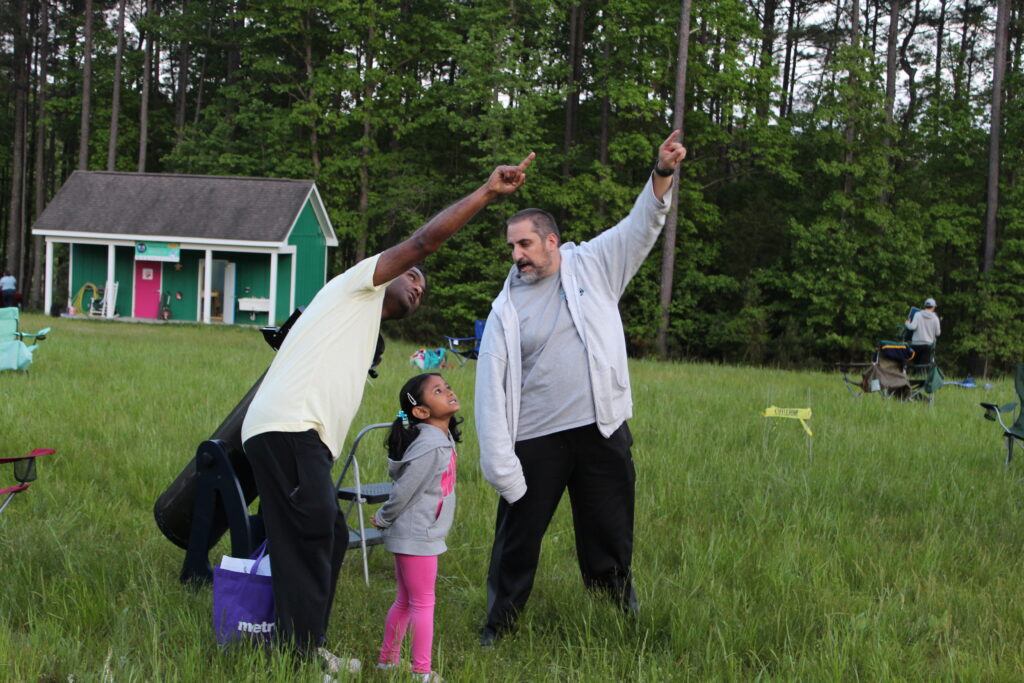
What is Light Pollution?
This year’s event overlapped with International Dark Sky Week (April 15-22), which works to protect dark skies. According to the International Dark-Sky Association, light pollution is “the inappropriate or excessive use of artificial light” and can have environmental consequences for humans, wildlife and the climate. Too much light interrupts the rhythm of night and day causing the night to become brighter and brighter. The effects range from increasing energy consumption and disrupting ecosystems to harming human health.
NASA’s Black Marble is an online software suite that produces remote satellite imagery capturing artificial lighting at night. The NASA product removes clouds and corrects for atmospheric, terrain, vegetation, snow, lunar and stray light effects creating an accurate view of night light.
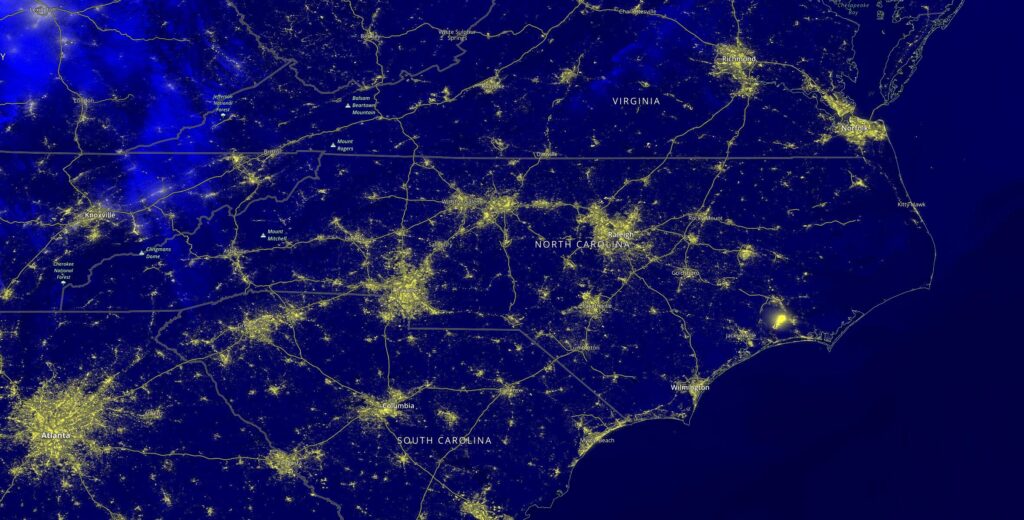
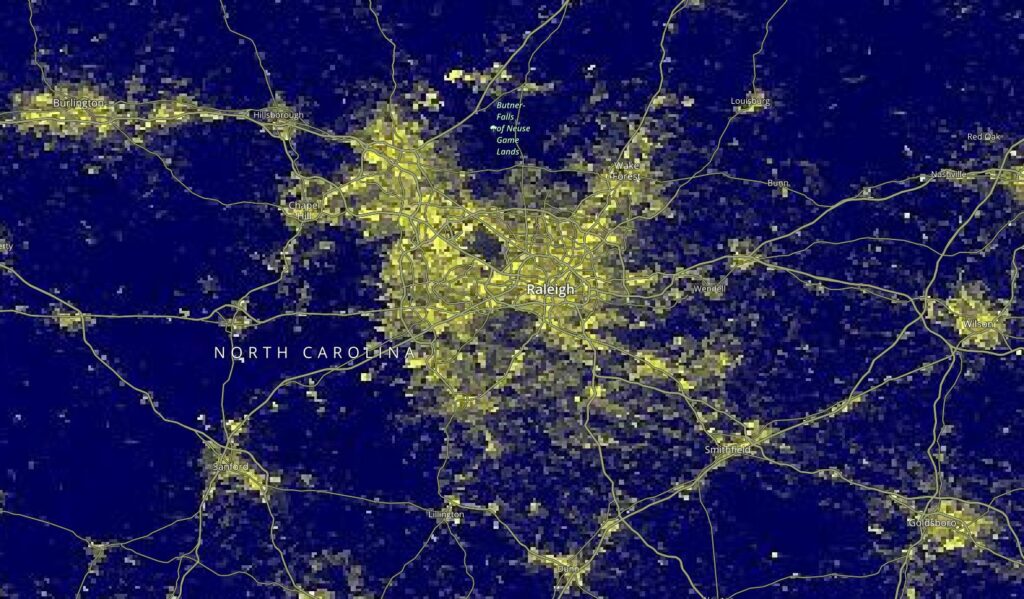
This interactive map allows the opportunity to better understand interactions between humans and the environment, how much light pollution there is and how it’s changed over time.
Only using light where and when it’s needed can help reduce light pollution. It can also be decreased by using shields to direct the light or installing motion detection lights. Public education on light pollution is also important. Some people don’t know what it is or what impacts it can have.
Learning about Light Pollution
As an educational event, attendees learned about light pollution through hands-on activities, which were included in the star party kits. One activity was a light pollution tactile book, which contains different tactile representations of the constellations Orion and Cygnus. One is a dark sky representation, which means there is little light pollution, and the user is able to feel many stars. As light pollution increases in each of the representations, the number of stars you feel decreases.
Hosts also received the picture book, The Stars Just Up the Street, by Chapel Hill author, Sue Soltis, which features a young girl who wants to stargaze but is unable to see many stars because of the streetlights. She participates in community activism and gets the town to control the light pollution. In the end, the town participates in star parties.
Coupled with this book is an activity to show how shielding artificial light increases visibility at night. Unshielded lights cause glare, light trespass and sky glow. The activity demonstrates that shielding light can direct it downward, which is where it’s wanted, decreasing glare that causes night vision impairment, and decreasing sky glow.
“Unshielded light is counterproductive for safety,” Sayle said. “Your eye can adjust to very dim light and it can adjust to very bright light—but not both at the same time. When you introduce a glare bomb into the environment, you can’t see more dimly lit things. If you’re driving, it might be harder to see a person or animal in the road.”
Unique Events Across the State
Across the state, hosts added on additional activities, making each star party unique. For example, the Triangle Land Conservancy hosted Soltis, author of the featured picture book, for a reading of the picture book, The Stars Just Up the Street. Event goers also had the opportunity to hike a solar system scaled to a quarter mile trail.
With a mission to connect folks to nature, Triangle Land Conservancy also adopted the theme “Nature at Night,” and partner, Raptor Insights, brought education for learning about nature at night and pygmy owls for sharing.
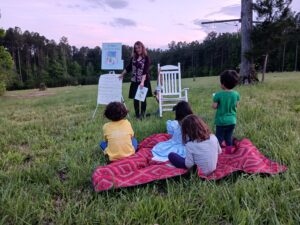
Cape Fear Museum’s Star Party at the Carolina Beach State Park hosted approximately 3,100 participants. Taking advantage of the plenty of space, activities spanned across the park. Camping at the park during the days of the event has also become popular, McDermott notes.
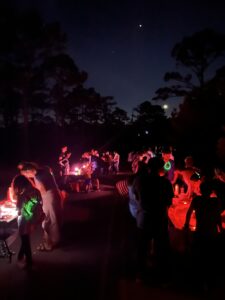
At Crystal Coast Stargazers’ Star Party, after presentations from NASA experts and hands-on activities, attendees could take a starlight cruise ride to the Cape Lookout National Seashore Lighthouse, an International Dark Sky Park, to stargaze over the water.
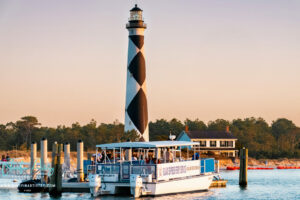
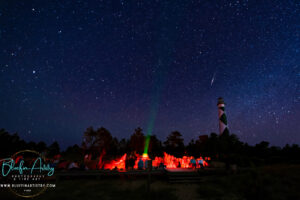
At the Dismal Swamp State Park, event goers enjoyed hands-on activities followed by a 2-mile wagon ride and 1-mile hike to the skywatching spot with telescopes and experts from Back Bay Amateur Astronomers.
Sayle notes that all star party hosts did a great job putting together this year’s events and educating about this year’s theme focused on dark skies and light pollution.
Stargaze anytime and anywhere!
“Stargazing is the best way to explore the night sky and discover all it offers,” Cook said. “As one stargazes and becomes more familiar with the night sky, they are able to identify and name stars and constellations.”
Stargazing is generally an easy and simple hobby to get involved in. Stargazing entails stepping outside and using your naked eye to scan the night sky. Telescopes and binoculars can be helpful, but aren’t necessary. Observing tools like star maps and free stargazing applications are also available for guiding your stargazing. For those who are visually impaired, tools such as tactile maps and sonification are available, so everyone can enjoy the night sky.
NC Science Festival has online resources to guide your stargazing activities.
- Star Party Kit
- Raleigh Astronomy Club Observing Tools
- Scientific American: Making Astronomy Accessible for the Visually Impaired
☽
- Categories:
